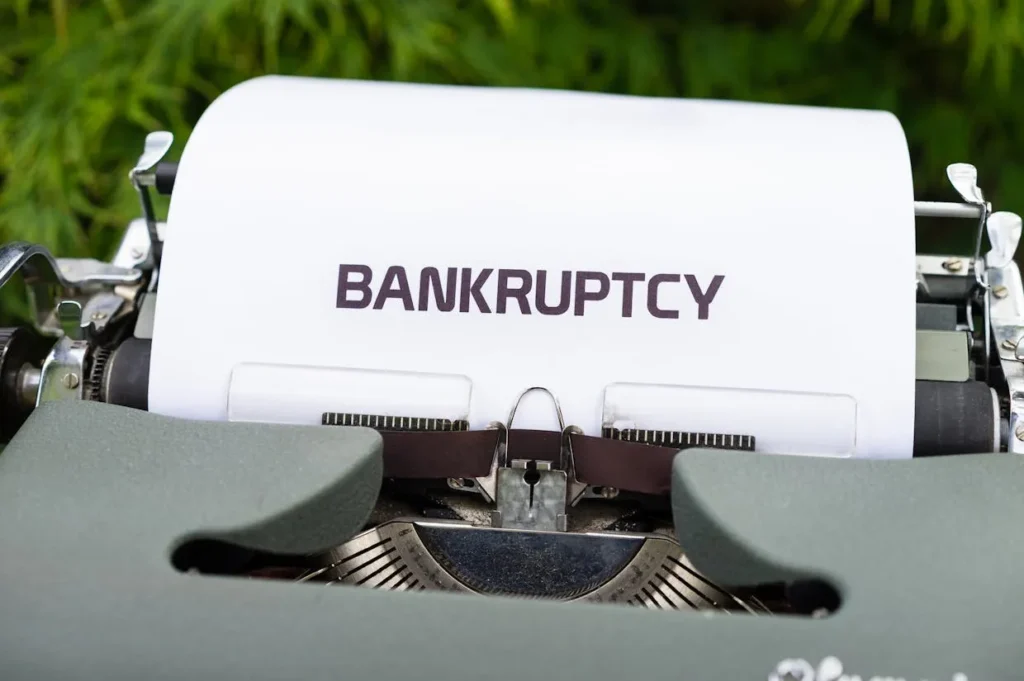
BRIC Secures $299.5 Million Settlement with Tether in Celsius Network Bankruptcy — A Major Step Toward Digital Asset Recovery
In a landmark development in the ongoing Celsius Network bankruptcy case, the Blockchain Recovery Investment Consortium (BRIC) — a joint venture formed by GXD Labs and VanEck — announced that Tether has paid $299.5 million to the Celsius bankruptcy estate. The payment comes as part of a settlement following an adversary proceeding initiated in August 2024, marking one of the most significant recoveries in the complex web of digital asset insolvencies that emerged from the crypto market’s 2022 collapse.
The announcement represents not just a financial resolution, but also a symbolic milestone in the evolution of digital asset recovery, signaling increasing sophistication and collaboration between traditional finance and blockchain-native entities in navigating bankruptcy and asset reclamation.
Background: Celsius’s Downfall and the Legal Fallout
The Celsius Network, once one of the largest crypto lending platforms in the world, filed for bankruptcy in July 2022 amid a liquidity crisis triggered by the broader market downturn. Like many firms in the decentralized finance ecosystem, Celsius promised high yields on crypto deposits, only to face catastrophic shortfalls when digital asset prices plummeted.
At its peak, Celsius managed billions in customer assets. However, by mid-2022, it was forced to freeze withdrawals, citing “extreme market conditions.” This freeze was followed by revelations of risky lending practices, internal mismanagement, and an unsustainable business model that ultimately led to one of the largest bankruptcies in crypto history.
The bankruptcy proceedings that followed have been among the most complex in the digital asset industry, involving intricate issues of collateral, intercompany transfers, and disputed ownership of assets. Among those disputes was Celsius’s adversary proceeding against Tether, the world’s largest stablecoin issuer, which became a focal point of attention for creditors and industry observers alike.

The Adversary Proceeding Against Tether
Filed in the United States Bankruptcy Court for the Southern District of New York, the adversary proceeding alleged claims under the U.S. Bankruptcy Code and related legal provisions. The claims stemmed from collateral transfers and liquidations that took place in the months leading up to Celsius’s collapse in July 2022.
According to court filings, Celsius sought to recover funds related to these transactions, arguing that they constituted preferential or avoidable transfers under bankruptcy law. The case underscored the increasingly blurred lines between centralized finance (CeFi) institutions like Celsius and the decentralized crypto markets they operated within — a legal gray area that has tested the boundaries of bankruptcy jurisprudence.
By August 2024, the Celsius estate, under the management of BRIC, had moved decisively to pursue the claims, initiating the proceeding against Tether. Just two months later, the parties reached a settlement valued at $299.5 million, a resolution that avoided prolonged litigation and provided immediate financial benefit to Celsius creditors.
Leadership Statements: A Swift and Strategic Resolution
“We are pleased to have resolved Celsius’s adversary proceeding and related claims against Tether,” said David Proman, Managing Partner of GXD Labs, an affiliate of Atlas Grove Partners, in an official statement. “In addition, we are pleased with the timeliness with which the settlement was achieved.”
Proman’s remarks highlighted the dual importance of the settlement — not only for the monetary recovery it delivers, but also for the efficiency and precision with which it was reached. In the often slow-moving world of bankruptcy litigation, where disputes can drag on for years, BRIC’s ability to secure a near-$300 million settlement in a matter of months stands out as a remarkable achievement.
The resolution reflects the Consortium’s disciplined approach to managing high-stakes digital asset recoveries. “Speed, transparency, and fairness are central to BRIC’s mission,” Proman added. “This settlement is an example of how well-coordinated litigation management can unlock value for creditors in record time.”
Formation and Mission of BRIC
The Blockchain Recovery Investment Consortium (BRIC) was established in early 2023 with a clear mission: to maximize recoveries in digital asset bankruptcies through a combination of legal expertise, financial strategy, and blockchain intelligence. It is a joint venture between GXD Labs and VanEck, both of which bring complementary strengths to the table.
- GXD Labs, founded by executives with backgrounds in litigation finance and digital asset management, focuses on the operational and recovery aspects of distressed crypto estates.
- VanEck, a globally recognized investment management firm with deep experience in traditional finance and blockchain investments, contributes institutional rigor, financial structuring capabilities, and credibility in capital markets.
Together, these organizations created BRIC as a purpose-built recovery and litigation management entity designed to navigate the unique challenges posed by crypto bankruptcies — including tracing blockchain-based assets, enforcing claims across international jurisdictions, and managing illiquid or volatile digital holdings.
BRIC’s Role in the Celsius Bankruptcy
In January 2024, following Celsius’s exit from bankruptcy protection, the BRIC was formally appointed as the Complex Asset Recovery Manager and Litigation Administrator by the Debtors and the Unsecured Creditors’ Committee. This appointment marked a significant transition in the Celsius case — from crisis management to long-term recovery and wind-down operations.
Under BRIC’s stewardship, the Celsius estate has been engaged in identifying, managing, and monetizing a portfolio of illiquid assets and litigation claims. These assets, ranging from private equity stakes in crypto startups to residual holdings in digital currencies, represent a complex mosaic of value that requires specialized handling.
The Tether settlement, therefore, is not an isolated victory but part of a broader strategic effort by BRIC to maximize recoveries for creditors through disciplined litigation and asset recovery.
Expertise Behind the Consortium
The BRIC team includes seasoned professionals with deep experience in both finance and digital asset litigation.
- R. Christian Wyatt and David Proman of GXD Labs bring backgrounds in alternative asset management, complex litigation, and financial structuring.
- Pranav Kanade and Matthew Babinsky of VanEck contribute institutional investment expertise and strategic oversight.
Together, they represent a multidisciplinary leadership model uniquely suited to the hybrid world of blockchain finance and bankruptcy law.
“The digital asset ecosystem has evolved rapidly, but the legal frameworks governing insolvency and recovery have struggled to keep pace,” said one industry observer familiar with BRIC’s work. “What BRIC is doing is pioneering — they’re bridging traditional financial recovery practices with on-chain asset tracing and digital litigation management.”
Legal Advisors and Strategic Partnerships
Advising BRIC throughout the Tether proceedings was Quinn Emanuel Urquhart & Sullivan, LLP, one of the world’s leading litigation firms. Benjamin I. Finestone, co-head of the firm’s bankruptcy and restructuring group, played a key role in guiding BRIC through the complex legal landscape surrounding the adversary claims.
Quinn Emanuel’s involvement underscored the high stakes of the case and the intricate interplay between traditional legal principles and digital asset mechanics. The firm’s reputation for aggressive, results-oriented litigation strategy aligned closely with BRIC’s mandate to deliver timely recoveries for creditors.
Implications for the Broader Crypto Bankruptcy Landscape
The $299.5 million settlement between BRIC and Tether carries implications far beyond the Celsius estate. It sets a precedent for how digital asset disputes within bankruptcy proceedings can be resolved efficiently, even when the parties operate across different regulatory frameworks and jurisdictions.
For creditors of failed crypto platforms, the outcome reinforces the value of professionalized recovery management. Rather than leaving asset recovery to ad hoc efforts or lengthy legal battles, the BRIC model demonstrates that specialized, coordinated management can produce tangible results in record time.
For the crypto industry at large, the case also signals an increasing maturity in legal accountability. Tether’s willingness to settle reflects an understanding that institutional cooperation — rather than prolonged conflict — is essential for restoring trust and stability to the digital asset market.
While the Tether settlement marks a major milestone, BRIC’s work on behalf of Celsius creditors is far from over. The Consortium continues to manage a range of illiquid and litigation assets as part of the estate’s wind-down process. These include potential recoveries from other counterparties, liquidations of residual crypto holdings, and the resolution of ongoing claims.
Each recovery adds incremental value to the Celsius estate and, by extension, to the thousands of investors and customers affected by the platform’s collapse. As the estate’s assets are monetized, distributions to creditors are expected to accelerate, providing long-awaited closure to one of crypto’s most high-profile failures.
“BRIC’s focus remains unwavering,” said a spokesperson for the consortium. “Every recovery — whether through litigation, settlement, or asset management — contributes to rebuilding confidence in digital asset markets and demonstrating that even in the most complex bankruptcies, accountability is achievable.”
Conclusion: A Turning Point for Digital Asset Accountability
The successful resolution between BRIC and Tether marks more than the conclusion of a single legal dispute — it reflects a broader turning point in how the digital asset sector addresses insolvency, litigation, and recovery. With nearly $300 million secured for the Celsius bankruptcy estate, BRIC has proven that strategic collaboration between financial and legal experts can produce substantial outcomes in an industry often criticized for opacity and unpredictability.
As the Celsius case moves toward its final stages, and as BRIC continues its broader recovery efforts, the consortium’s work is setting a new benchmark for transparency, efficiency, and creditor advocacy in digital finance.
In the aftermath of the 2022 crypto market crash, where billions in investor funds were lost across multiple platforms, this latest achievement stands as a reminder that recovery — though complex and often delayed — is possible through persistence, professionalism, and collaboration between traditional finance and blockchain innovators.




